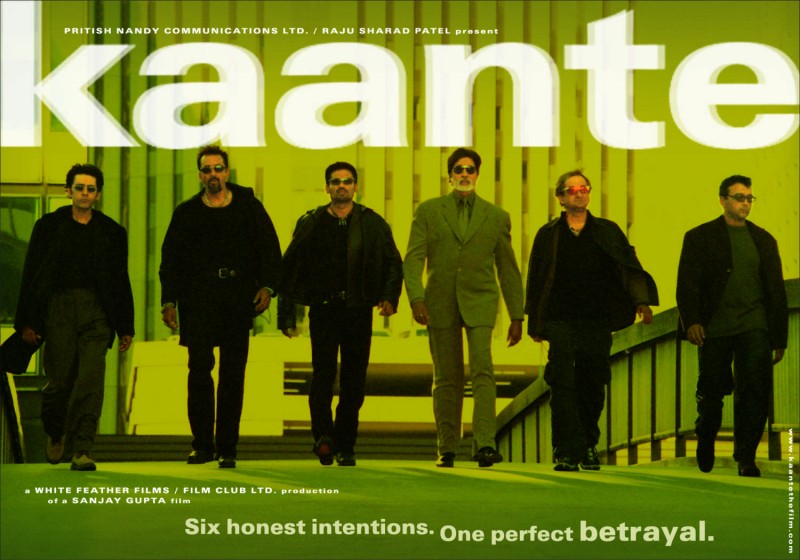
Sanjay Gupta's "Kaante," an Indian crime thriller released in 2002, was a trailblazing movie that dared to deviate from the accepted Bollywood filmmaking norms. Along with having an impressive ensemble cast with actors like Amitabh Bachchan, Sanjay Dutt, and Suniel Shetty, it also defied conventional Indian filmmaking practises by trying something novel. In order to capture the gritty, unadulterated feel of the city, the film was originally going to be filmed in the slums of Mumbai. The production eventually moved to the sprawling streets of Los Angeles, though, as a result of unanticipated events and artistic decisions. This decision had a significant impact on Bollywood history in addition to altering the course of the movie. In this piece, we will examine the intriguing story of "Kaante" and how the movie was affected by its change in setting.
The initial inspiration for "Kaante" came from a desire to capture the harsh and unforgiving reality of Mumbai's slums. Mumbai, which is frequently referred to as the "City of Dreams," is renowned for its glaring disparity between wealth and poverty. By using the slums as a backdrop for their compelling story, the filmmakers aimed to capture the essence of this stark divide. The story of the movie, which was about a group of six thieves planning a heist in the middle of the city's shantytowns, depended heavily on the choice of setting.
"Kaante"'s director Sanjay Gupta and his crew had a clear vision. Emphasising the challenges, feelings, and complexities that characterised this environment, they sought to produce a gritty, accurate depiction of slum life. To ensure that the movie would be an accurate portrayal of their lives, the team conducted extensive research and even spoke with residents of Mumbai's slums.
However, as filming in the Mumbai slums continued, the filmmakers faced a variety of difficulties. Logistics was one of the key issues. It was very difficult to set up equipment and accommodate the large crew because of the congested, narrow lanes and the small amount of available space. Security issues and interruptions from curious bystanders were additional challenges the team had to deal with, which frequently interfered with the shooting.
Another significant challenge was the weather. The monsoon season in Mumbai, which is notorious for its torrential rains and flooding, presented a risk to the production schedule and significantly raised costs. An already complicated project was made even more uncertain by the unpredictable nature of the weather.
The local government and community members also opposed the films because they didn't like how their slum was portrayed on screen. There were disagreements regarding licences and permissions, and occasionally filming had to be stopped because of demonstrations.
The decision to move the production to Los Angeles, California, was a crucial one that the filmmakers made in the midst of these difficulties. This decision was made after giving careful thought to the practical challenges encountered during the Mumbai shoot.
As a location for "Kaante," Los Angeles offered many benefits. First of all, it provided a regulated and structured environment that made scheduling and logistics easier. The transition went relatively smoothly thanks to the availability of cutting-edge facilities, skilled crew members, and a well-established film industry ecosystem.
The diverse landscape of Los Angeles also enabled the filmmakers to recreate the urban gritty they had envisioned for the Mumbai slums. The city offered a flexible canvas for storytelling, from its busy streets to its untamed landscape. The Los Angeles skyline, with its iconic buildings, gave the movie a distinctive visual quality.
Additionally, the weather in Los Angeles turned out to be much more dependable and manageable, lowering the possibility of exorbitant delays brought on by unfavourable conditions. For a production with a constrained schedule and budget, this predictability was especially important.
Undoubtedly, "Kaante"'s" visual and thematic components were changed by its relocation to Los Angeles. The film's main plot and character dynamics were not altered, but the change in setting gave it a more slick and fashionable appearance. The organised chaos of an active American city took the place of the frantic energy of the slums of Mumbai. The film's grim realism suffered a little bit, but it was partially replaced by a cinematic appeal that brought its own charm.
In hindsight, it was a practical choice to relocate "Kaante" from the slums of Mumbai to Los Angeles. It made it possible for the filmmakers to get around the logistical and environmental difficulties they encountered in India. The movie may have lost some of its original rawness, but it gained a new aesthetic that connected with the viewers.
"Kaante" is a perfect illustration of a Bollywood movie that had to adjust and change throughout the course of production. Moving from the streets of Los Angeles to the slums of Mumbai was more than just a change in scenery; it was a testament to the adaptability and tenacity of Indian filmmakers. Despite the difficulties it encountered, "Kaante" was able to craft an engaging story and is still remembered as a significant turning point in Bollywood film. Although the choice to film in Los Angeles may have been unexpected, it ultimately gave the movie a unique perspective, demonstrating that creativity can flourish despite hardship.
From Telecom Tunes to Bollywood Beats
The Evolution of 'Hasta La Vista' to 'Hasee Toh Phasee'
How 'Rab Ne Bana Di Jodi' Breathed New Life into the Dancing Jodi